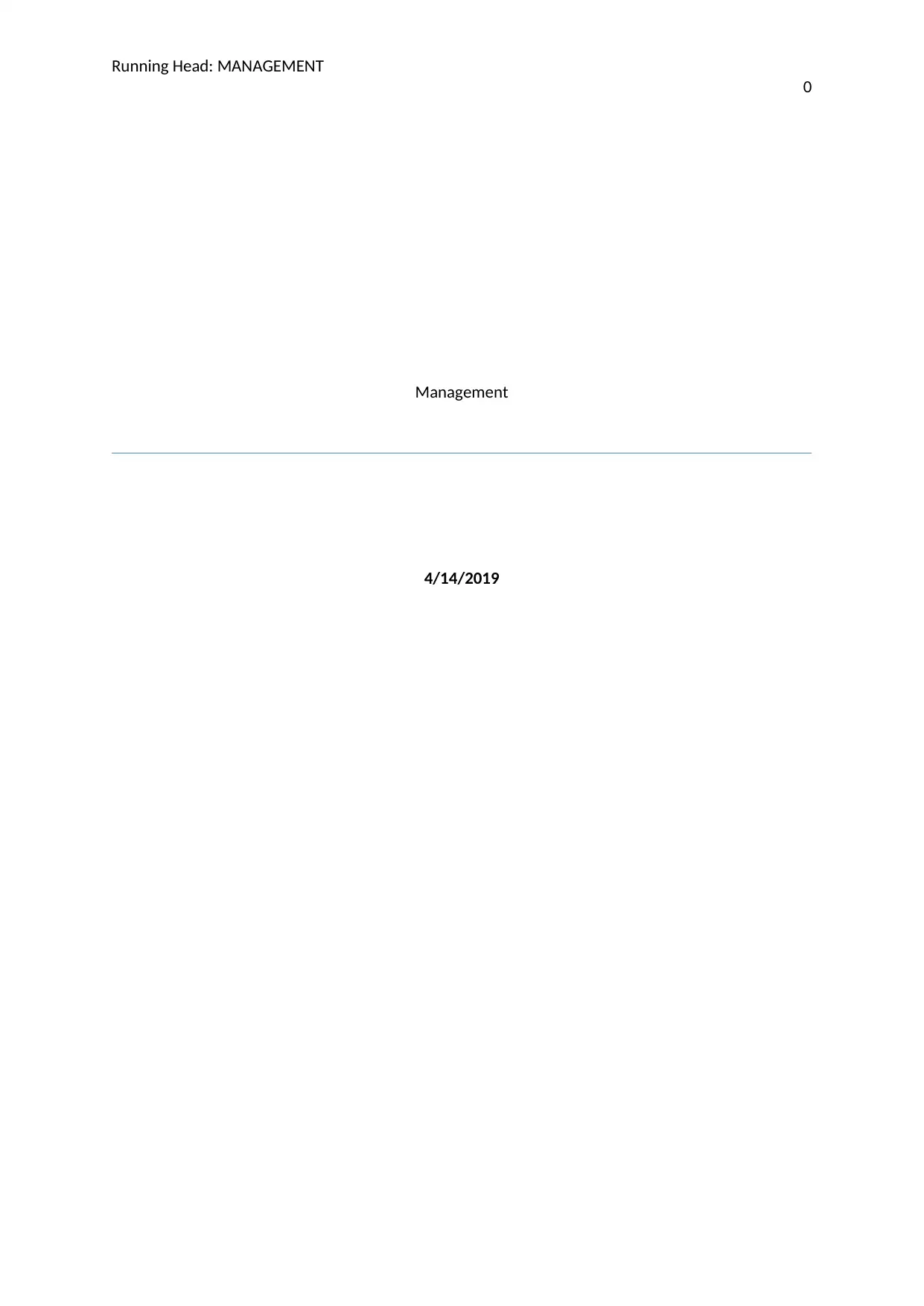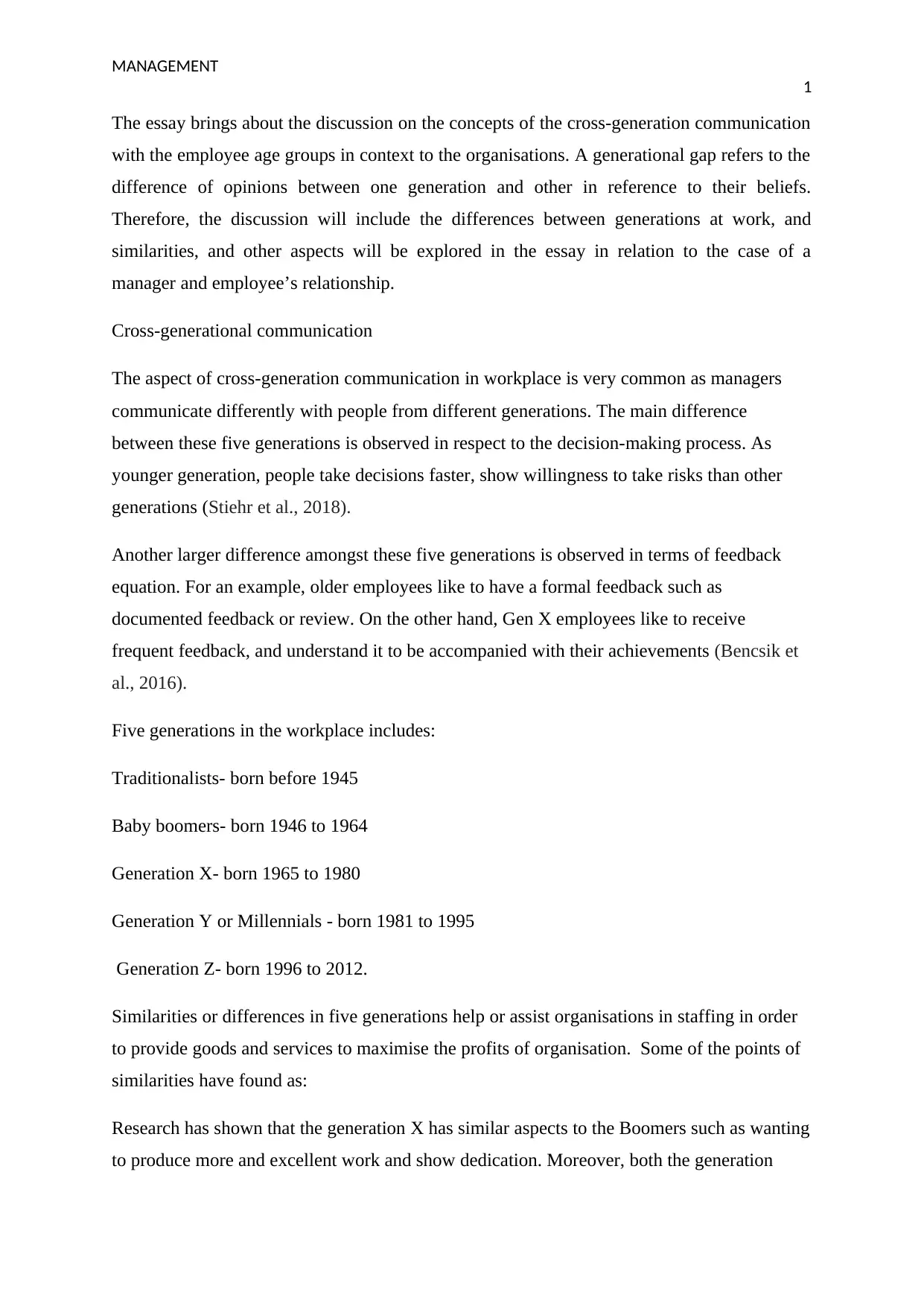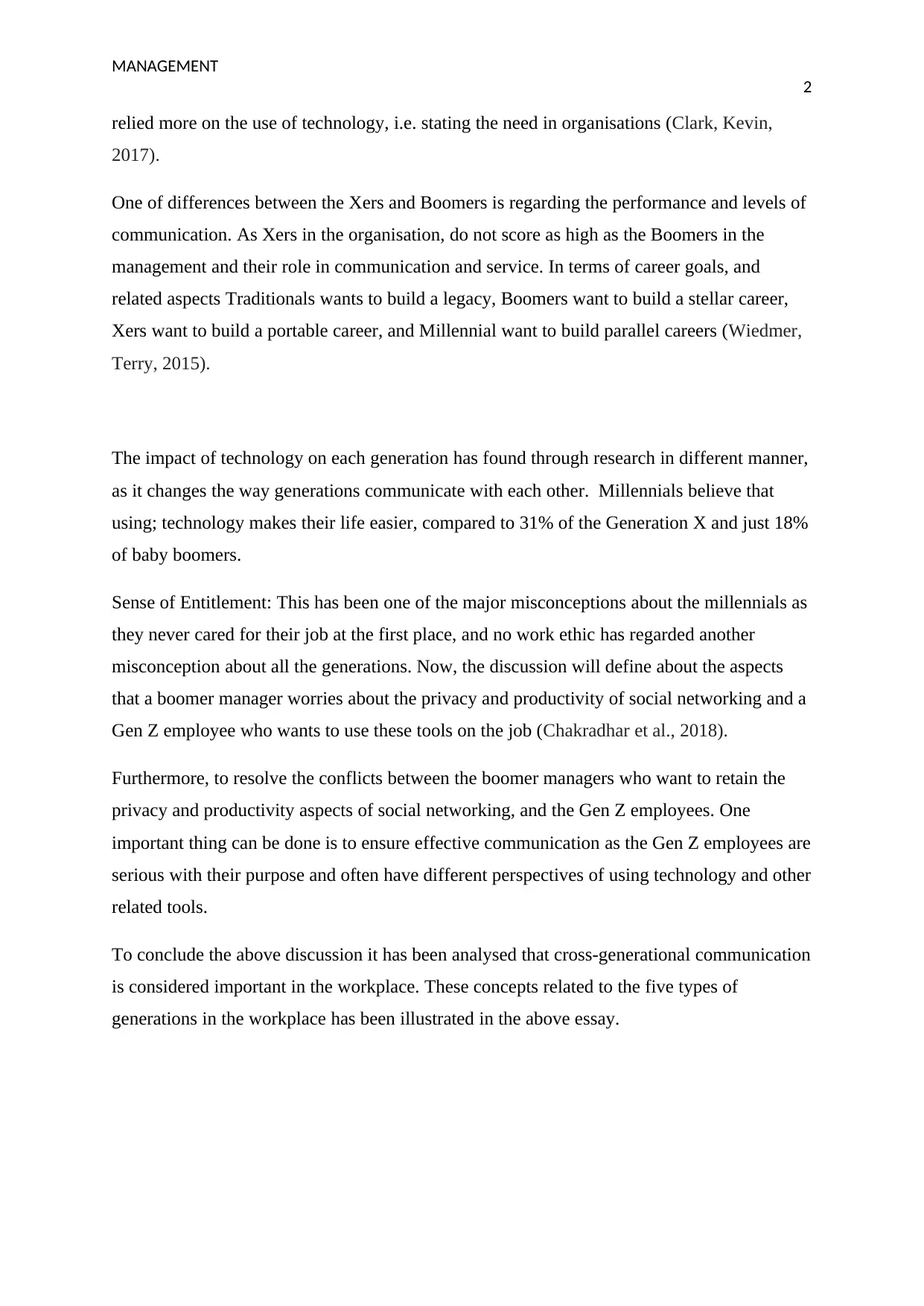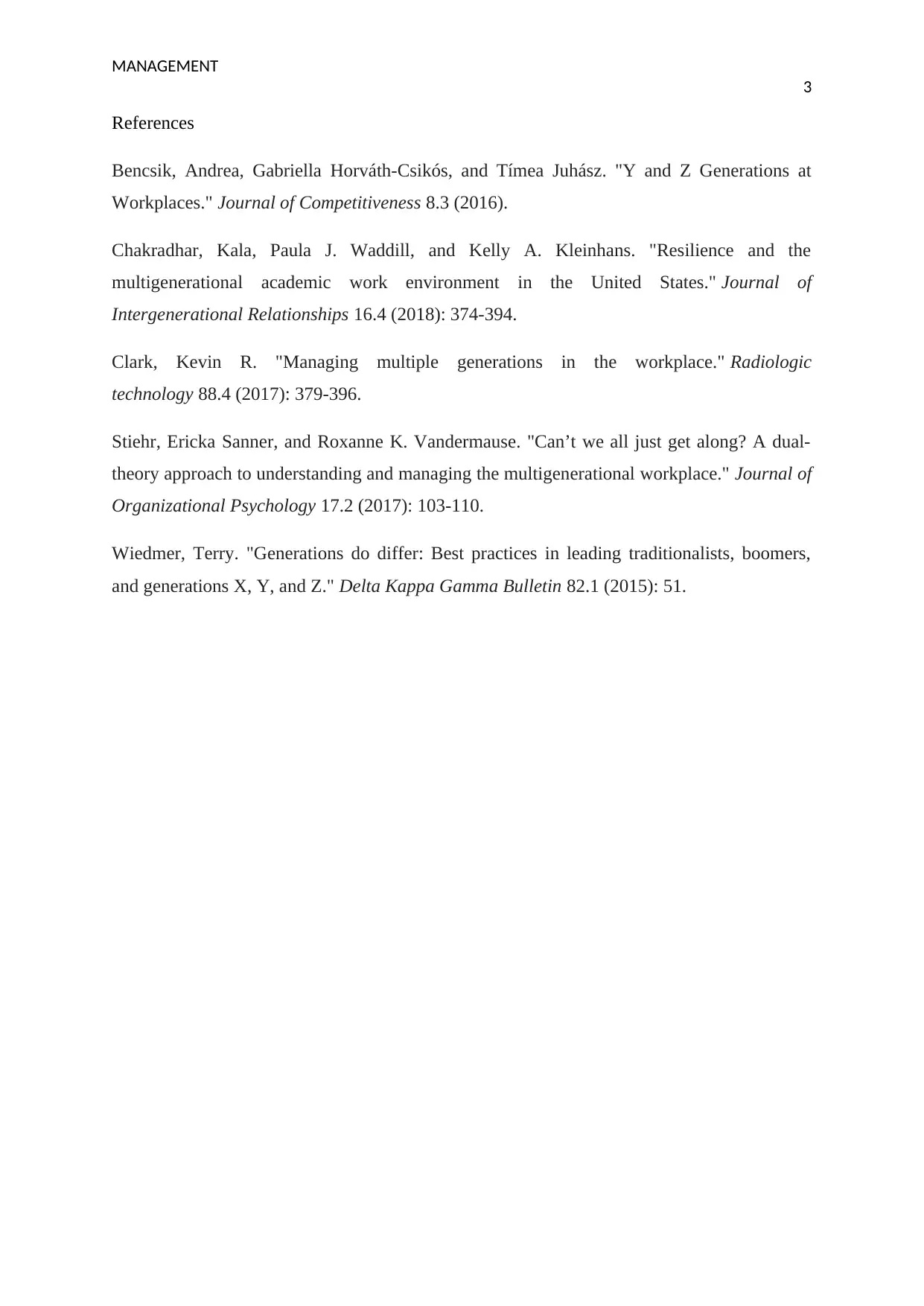Essay on Cross-Generational Communication Across Five Generations
VerifiedAdded on 2023/01/19
|4
|851
|21
Essay
AI Summary
This essay delves into the complexities of cross-generational communication within organizations, focusing on the differences and similarities between five distinct generations: Traditionalists, Baby Boomers, Generation X, Millennials, and Generation Z. It explores how generational gaps impact communication styles, decision-making processes, and feedback preferences in the workplace. The essay highlights the influence of technology on each generation and examines common misconceptions, such as the 'sense of entitlement' often associated with Millennials. Furthermore, the essay addresses potential conflicts, such as those arising from differing views on social networking and productivity, and suggests effective communication as a key strategy for resolution. The essay emphasizes the importance of understanding and managing cross-generational dynamics to enhance organizational effectiveness and maximize profits.
1 out of 4











![[object Object]](/_next/static/media/star-bottom.7253800d.svg)